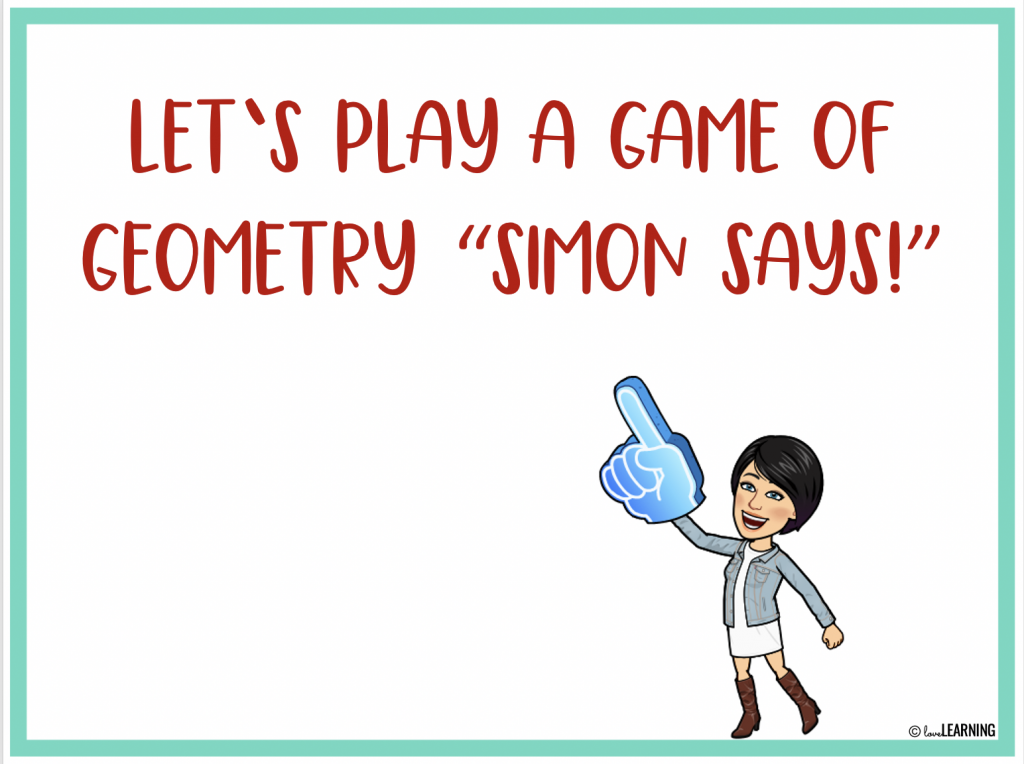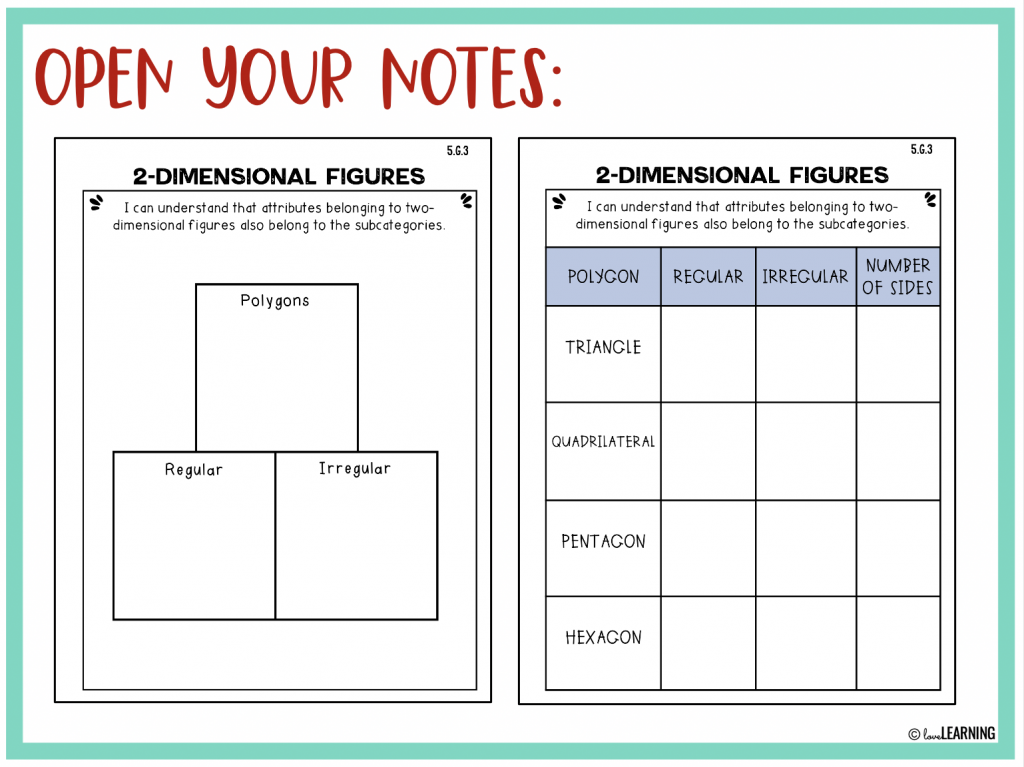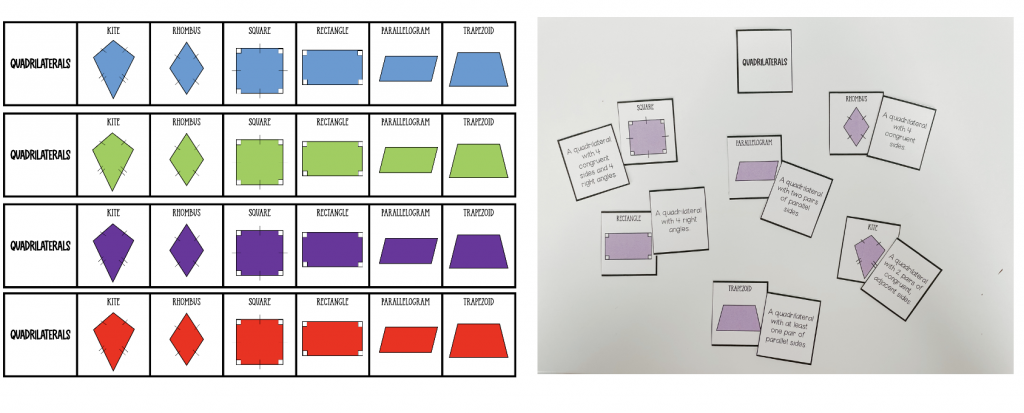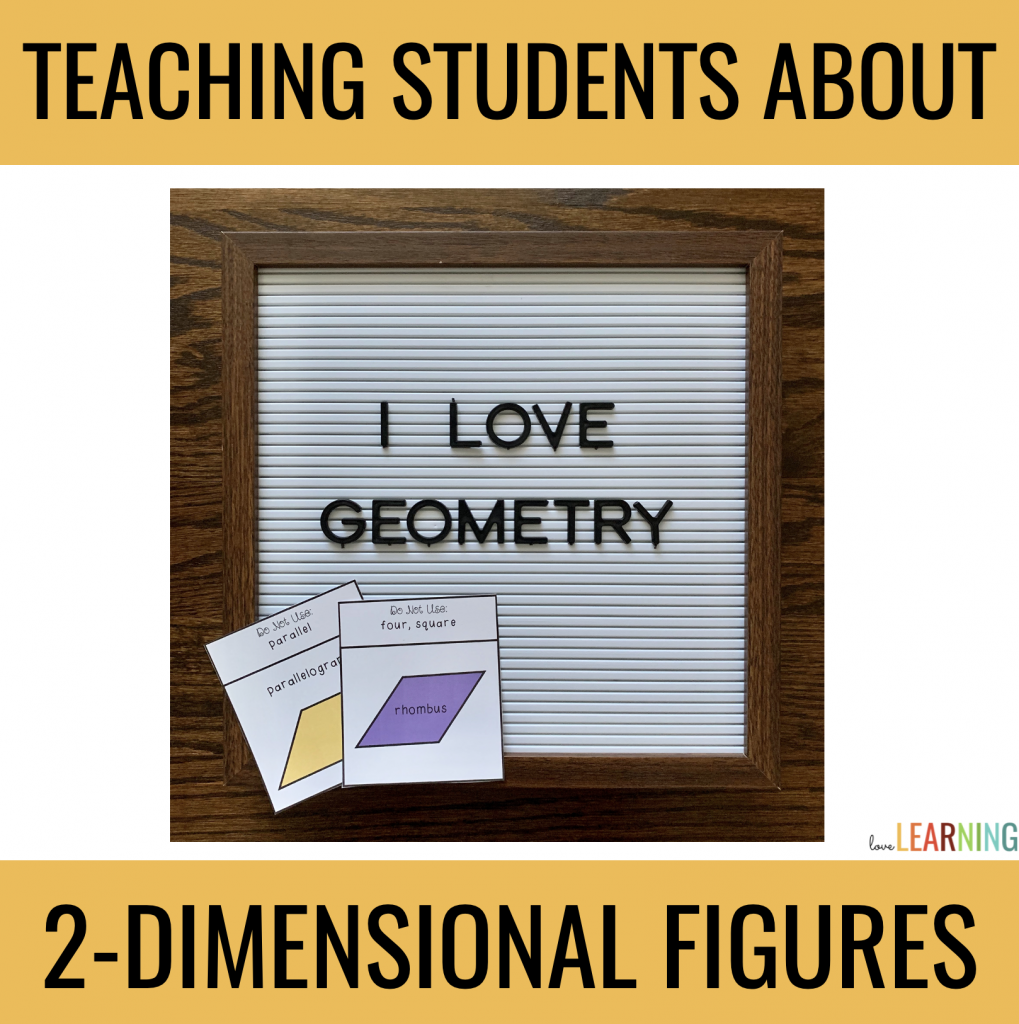
Are you a parent or teacher of elementary school students who are just learning about geometry? Just getting started with teaching this subject can be intimidating and overwhelming. But don’t worry – with the right strategies, teaching geometry to young students can be both educational and engaging. In this article, you’ll learn how to teach geometry to elementary students. From play-based activities to the use of visuals, you’ll gain a better understanding of how to introduce your students to this area of mathematics and lay the groundwork for building their geometric skills.
I am the first to admit that Geometry was not my strong suit in high school. I’m more of an Algebra girl and couldn’t quite grasp the concept of proofs and why in the world I needed to learn about them.
Needless to say, when I first started teaching my 5th graders how to classify polygons, triangles, and quadrilaterals – I was a little apprehensive. When I am not confident about a topic, I throw everything I have into learning about it because I never want my students to feel the same way. Our fifth grade Geometry Unit is now my absolute favorite, and my students LOVE it!
Here are Some Tips for Teaching Students Geometry:
Play Geometry “Simon Says!”
I always start my unit by playing “Geometry Simon Says!” It is the perfect way to review previously learned vocabulary words through kinesthetic movements. The kids BEG to play!
We play with the following vocabulary words, but you can easily add more:
- Point (make a fist)
- Line (hands out like an airplane)
- Line Segment (hands out with fists)
- Acute Angle (show with arms)
- Obtuse Angle (show with arms)
- Straight Angle (hands out like an airplane)
- Parallel Lines
- Perpendicular Lines
- Intersecting Lines
- Congruent (with this one, kids change “same size, same shape”
Give Students Geometry Reference Sheets
One of the most challenging things about 2-Dimensional Figures is the amount of vocabulary students need to know. In my experience, some students just know it and understand polygons and their attributes quickly, and other students need a lot of review.
Last year, I gave my students these reference sheets to refer to and it made a huge difference in how I teach geometry to my students. This is especially crucial for our visual learners.
Teach the Attributes of Specific Polygons like Triangles and Quadrilaterals
I love to scaffold math instruction, and it’s at this point in the unit that I specifically begin to teach.
Using this PowerPoint Lesson and Notes, I start teaching students about specific polygons with a focus on regular and irregular polygons. This helps build the foundation for learning how to create quadrilateral and triangle hierarchies.
After this, we focus on quadrilaterals!
Before teaching the specific attributes of quadrilaterals, I have my students complete this Quadrilateral Discovery Activity.
You can use Geoboards or Geostix for this activity. I have used both! I love this activity because my students work together and have to use specific attributes of the quadrilaterals as they discuss the various shapes. Once we finish this activity, we have a class discussion about what they learned before I teach them the specific attributes.
The Quadrilateral Hierarchy Takes Practice, Practice, and More Practice!
When it comes to how to teach geometry to elementary students, this is the part that can get a bit tricky, but not really. Not if students have a firm understanding of regular and irregular quadrilaterals and their attributes.
I love the quadrilateral hierarchy, but it took me some time to fully understand it myself!
There are two different types of quadrilateral hierarchies that you can create, and it all has to do with which definition of a trapezoid your district uses.
- Inclusive Definition of a Trapezoid: A trapezoid has AT LEAST one pair of parallel sides (because at one point it can have 2)
- Exclusive Definition of a Trapezoid: A trapezoid has ONLY one pair of parallel sides.
Our district uses the inclusive definition, so that is the hierarchy that I create with my students:
If using this definition, I highly recommend watching this video with your students because he does an amazing job of explaining why a trapezoid has at least one set of parallel sides:
This concept takes a lot of practice and review, and one of the best ways that I have found to review this is through hands-on sort cards:
I simply print each student a set of cards, and they match the definitions and create the hierarchies on their desks. They draw the lines with Expo markers. I am telling you – this activity was a complete game-changer when it came to understanding both the triangle and quadrilateral hierarchy!

What about Triangles?
Once students have a firm understanding of polygons and quadrilaterals, triangles are actually pretty easy! It’s amazing how the brain learns!
I always start teaching my students about triangles with this fun brain teaser:
The video captures their attention and sets them up for learning about the various types of triangles. This, too, requires specific instruction and a lot of practice!
I use the sort cards from above, task cards, and a digital hierarchy sort to give my students a number of different practice activities.
There are a variety of triangle hierarchies that you can create with your students when teaching them about quadrilaterals.
Here are some examples:
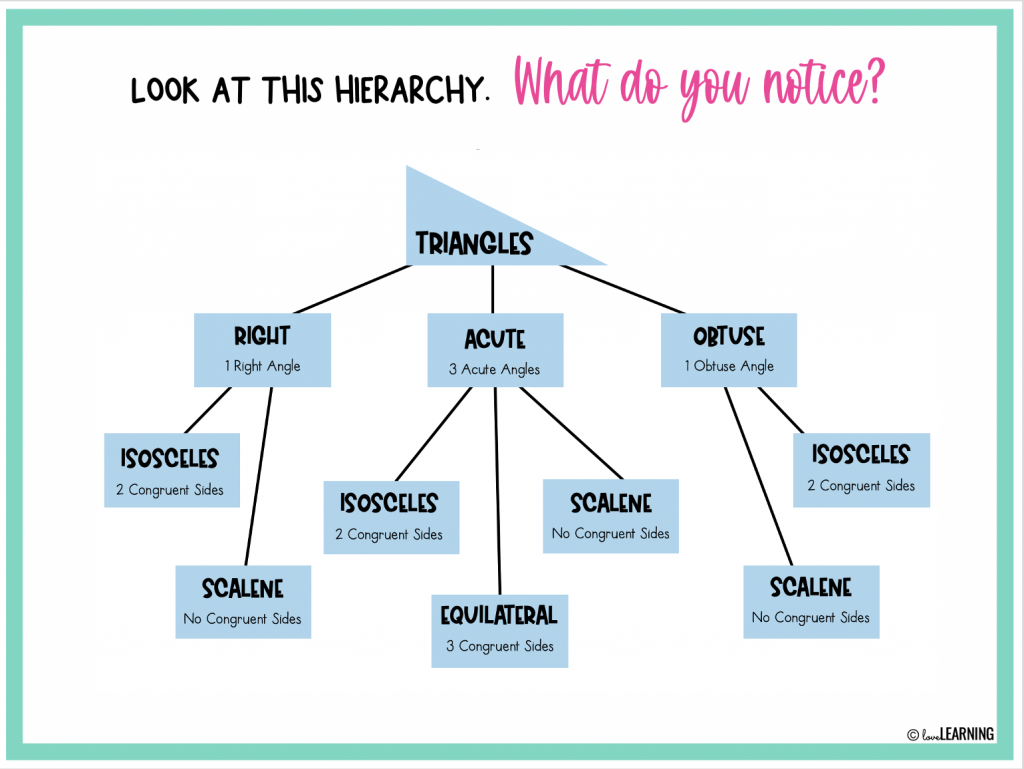
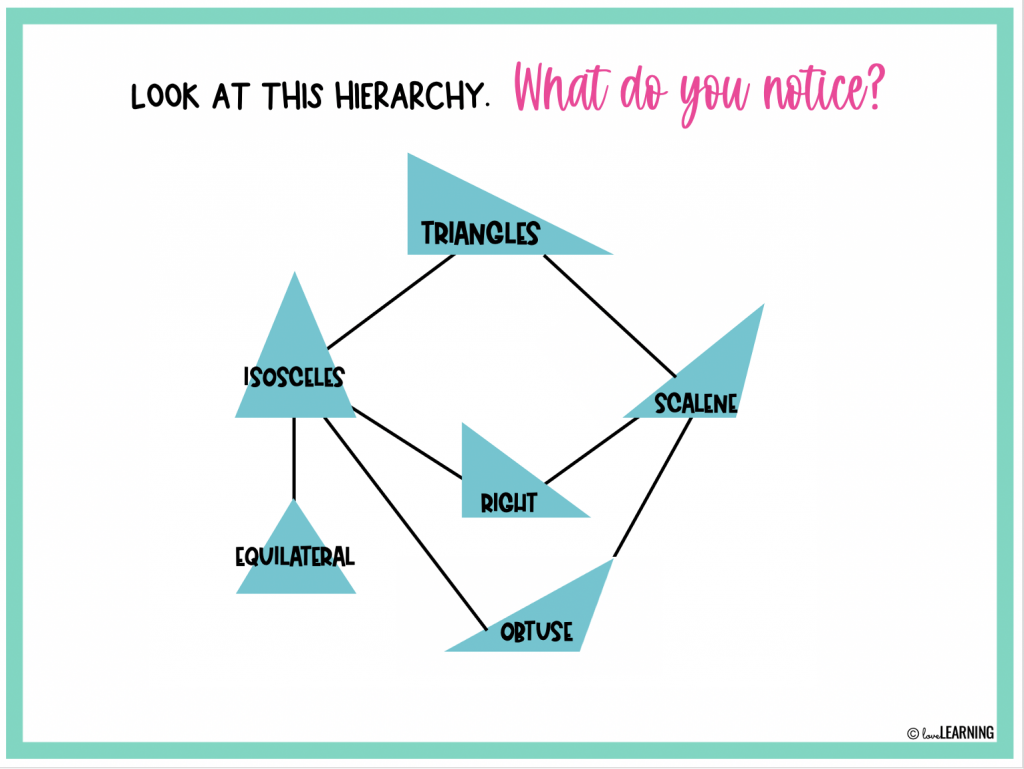
I usually spend about 3 weeks on this unit, and it has definitely become one of my favorites! You can find the COMPLETE unit here, but these items are also available individually.
Try some of these activities and watch your students LOVE math class! So you see, learning how to teach geometry to your elementary students isn’t so bad after all.
If you need ideas for involving parents in the math classroom and helping them help their child, read this post!
Happy Teaching!

PIN THE IMAGE BELOW TO SAVE THIS POST FOR LATER!


